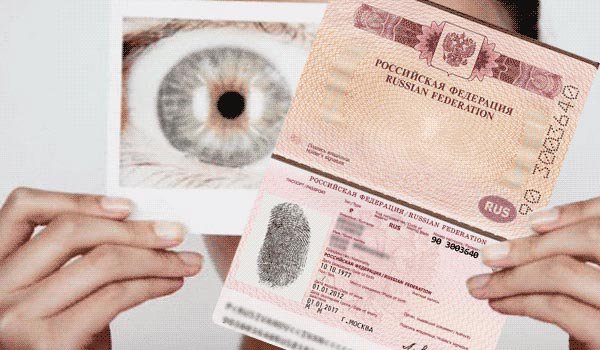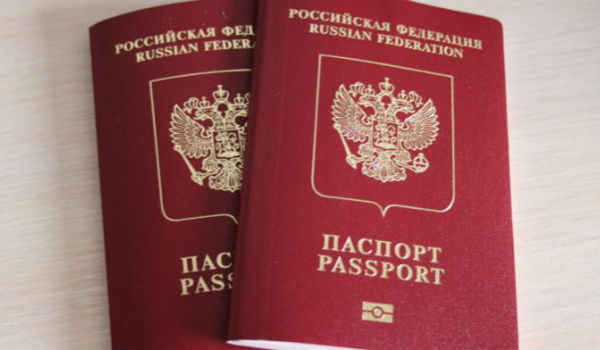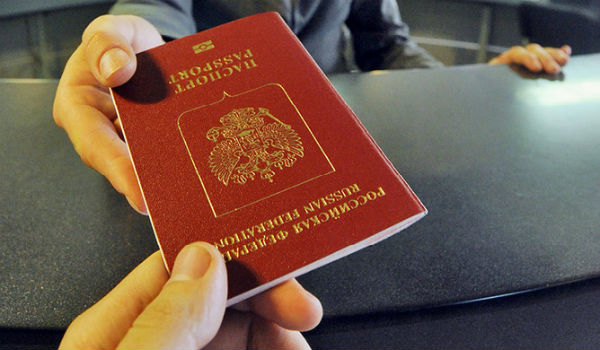What is the difference between a biometric passport and a regular one?
Going on a tourist trip, every citizen must have the necessary documents for this. Such documents can be: a tourist voucher, tickets for various modes of transport, booking orders, an insurance policy and, of course, a passport.
The main document of the tourist
A foreign passport is the main and obligatory document for all tourists who want to travel outside the Russian Federation, because it is an official documentary permission of the state for its citizen to cross state borders and stay outside it.
It is noteworthy that the word passport itself, translated from Latin, means “exit from the port” and this document is still relevant for everyone who crosses state borders. The appearance of a passport has changed a lot over the centuries, but even today the passports of different states look different.
In some foreign countries, the passport has the form of a plastic card; in the Russian Federation, the passport is issued in the form of a brochure with information about its owner and sheets for visa stamps.
In accordance with the current legislation, citizens of the Russian Federation, in accordance with their will, are issued new-type international passports (having additional biometric data of their owner) or ordinary ones (old-style).
Both types of passport are equivalent from a legal point of view, but differ from each other in many ways.
What is the difference between a biometric passport of a citizen of the Russian Federation and what information does it have?

For a traveler, the main difference between a passport with biometric data is the quick passage through passport control. Checking ordinary (old-style) passports takes much longer: the passport control officer is forced to visually check all the passport data and verify the photo with the identity of the tourist.
The difference between a new passport and an old one is the presence of an electronic chip with the owner's biometric data.
A new type of passport with biometric characteristics allows all identification operations to be carried out automatically: just open your passport on the page with a photo that contains all the data about the passport holder and wait for the scan to confirm identification.
Usually face recognition is calculated in a few seconds. Each human face has several dozen defining points.
Some of them are used in face identification technology, namely:
- distance between eyes;
- nose parameters;
- eye socket depth;
- chin length;
- cheekbone shape.
These defining points are measured by creating a numeric code that stores data about the passport holder. The computer, using this data, determines their correspondence with the photographic image in the passport. Therefore, when going through passport control, one should not forget to take off glasses and a hat, because the computer program needs a clear, unobstructed view of the entire face, otherwise you will have to lose several minutes of precious time at the passport control point.
Biometric identification, unlike a regular passport, saves tourists from unforeseen delays when going through passport control due to “human error”, because trying to identify a person visually, it is easy to confuse one person with another.
Biometric human recognition technology makes it almost impossible to illegally use other people's passports or their data, and therefore the percentage of this kind of violations has dropped sharply. It should also be noted that a biometric passport guards such illegal actions as theft of documents, illegal import of people, kidnapping of children, penetration of terrorists and drug dealers across the state border.
The bank of electronic information of fingerprints of passport holders in the Russian Federation began to be created in 2019. Usually papillary patterns are scanned from two index fingers. Children under the age of 12 are exempt from fingerprinting.
Appearance

The passport of the new sample has characteristic external differences. The coat of arms of the Russian Federation is applied on the dark purple cover of the passport using the gilded embossing method and the inscriptions: “passport” and “Russian Federation” in Russian and English. There is an additional badge imprint at the bottom of the cover.
The first page of the passport, covered with a special laminated film, allows you to view the photo from any viewing angle. This page contains information about the passport holder not only in the form of printed text, but also in a chip that is embedded in the plastic of the first page. Laser applied personal signature of the owner providing a high degree of protection against falsification. On the same page there is another element of protection - a diamond-shaped sign with the image of the globe.
Experts believe that it is impossible to fake this sign.
The series and number of this document are printed on the first page and are repeated on all subsequent pages in the form of perforated numbers.
There is also a difference between the two types of passports in the number of pages (46 pages for the new sample and 36 for the old one).
Owner details
Both passports contain the same information:
- surname and name of the owner (in two languages)
- citizenship (bilingual)
- Date of Birth
- Place of Birth
- date of issue
- name of the issuing authority
- expiration date
- owner's signature
- type of passport
- state code
- passport ID
The only difference between international passports (in terms of data availability) is only in the presence of biometric data in a new generation document.
Submission of documents and registration
Every citizen of the Russian Federation should be aware of the rules for applying for a passport.
Issues international passports (biometric and regular) by the Federal Migration Service of the Russian Federation, where you should apply. However, when contacting the FMS department, you need to know that applications for the issuance of a passport are not accepted from citizens who do not have registration at the place of stay. Knowing and complying with the legislation on the obligation of citizens to register at the place of stay will eliminate further misunderstandings.
You can also apply remotely through the public services portal (www.gosuslugi.ru), which significantly saves personal time and makes the process of obtaining a passport more comfortable. In any case, the issuance of a passport is carried out at the department of the Federal Migration Service of the Russian Federation, regardless of where the application was submitted.
In exceptional cases, foreign passports are issued by diplomatic missions of the Russian Federation, but this applies to citizens who are outside the Russian Federation and apply for a foreign passport.
For the issuance of a passport of the usual old sample, applicants submit:
- receipt for payment of state duty.
- completed application form;
- a copy of the passport and its original;
- 3 photos sized 35mm*45mm;
- a military ID or a certificate from the military registration and enlistment office (men from 18 to 27 years old);
To issue a new type of passport, you should not specifically worry about the photo for the passport itself, the photograph procedure is carried out during the delivery of documents. But 2 photos of 35mm * 45mm in size still need to be prepared, they will be needed for. For a regular passport, a questionnaire of a different sample is used and differs from the questionnaire that is filled out for a biometric passport. On this issue, you can consult with the specialists of the department of the Federal Migration Service of the Russian Federation.
Children under 14 also need a separate passport.. To do this, you need to submit a questionnaire, 2 photos, a copy of the birth certificate (+ original), copies of parents' passports (+ originals), confirm payment for the service. In the case of guardianship, documents confirming this fact are provided.
Passports for children under the age of 18 are issued only when accompanied by their parents.
Where is it issued?

A ready-made passport is issued personally to the owner at the offices of the Federal Migration Service of the Russian Federation. If at the time of issuing a passport a citizen has a previous valid passport, then a new passport is issued only if the previous one is returned.
The refusal of the migration service to issue a passport happens due to the submission of false information by the applicant, the applicant’s professional activities related to state secrets, the applicant’s serving a suspended sentence by a court decision, the presence of unfulfilled obligations by a court decision, as well as the refusal of one of the parents to take a minor child abroad .
What kind to choose?

The legislation of the Russian Federation does not give instructions to use only a new passport with biometric data. The right of a citizen to make his own choice. It should be noted that holders of different types of passports do not have any differences in the implementation of their rights.
The indisputable advantage of a new type of passport is a high degree of protection and identification of the owner. For example, if, as a result of unforeseen circumstances, the photo on the passport page is not readable by translucence, then it is possible to confirm the identity of the passport holder by fingerprints. And in case of theft such a passport, the attackers will not be able to use it.
For people who lead an active lifestyle and travel frequently, a 10-year passport validity period will be very convenient. However, due to the fact that the preparation of a new type of passport with a high degree of protection is more expensive, the cost of such a passport is somewhat higher.
But when applying for a regular passport, parents of minor children can still enter their children in it. The appearance of young children changes very quickly, so it is possible that parents will have fewer problems by inscribing small children in their passport. The validity of an old-style passport is limited to a period of 5 years.
Perhaps, for some citizens, in the matter of choosing a passport, the cost of its registration will be important. To become the owner of a biometric passport for a period of 10 years, a state duty is paid 3 500 rubles. An ordinary passport valid for 5 years will cost its owner 2000 rubles.
If children go on a trip with their parents under 14 years old, then issuing a biometric passport for each child will cost 1500 rubles. If a minor child is included in the parent's regular passport, then such a service costs 1,000 rubles per child.
If minor children are between the ages of 14 and 18, then a separate passport is issued for each child.
But the cost of international passports for children aged 14 to 18 years is lower: the state duty for issuing a biometric passport will be 2450 ruble th, and issuing a regular old-style international passport will cost 1400 rubles.
Trying to decide on the choice of the type of passport, you need to ask about the timing of their production. The website of public services sets the terms for the provision of services for issuing a biometric passport from 1 to 4 months. It is noteworthy that for an ordinary passport this period is defined from 3 days to 4 months.
When choosing the type of passport, it is reasonable to take into account how often you plan to travel abroad. With the prospect of frequent travel, it may not be advisable to issue a regular passport, although if this document is needed urgently, there is hope to get it faster than a biometric one.
When the choice is finally made and the passport of the required sample is issued, you can be sure that the main tourist document has been received, it remains only to determine the travel route.




